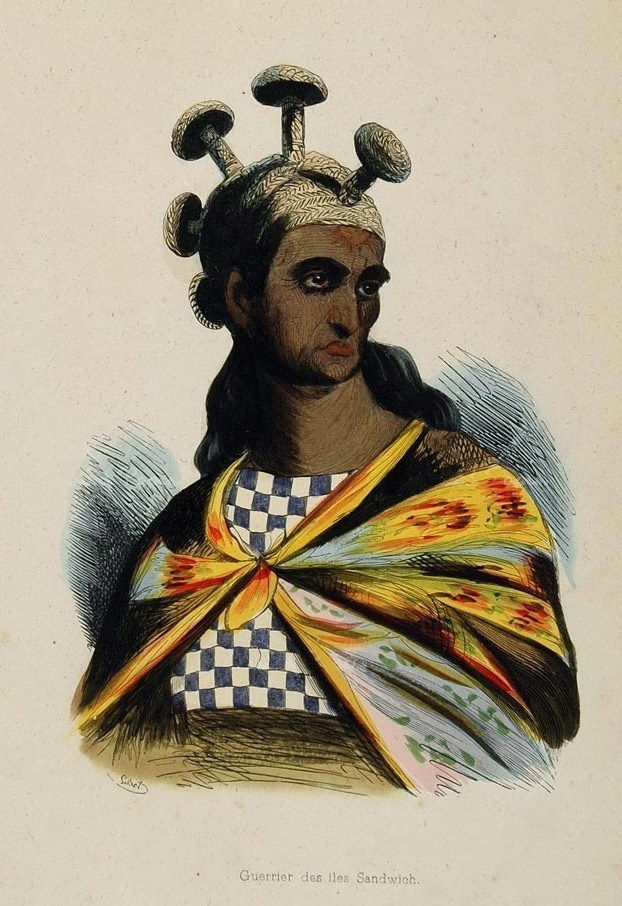Article: Hawaiian Political Status of Male Chiefs Mahiole Pōheoheo
- Peter T. Young
- 17 de mai. de 2018
- 2 min de leitura

“In every day life the ancient Hawaiian trusted to the protection of his thick, coarse hair and wore no hat. When the conch-shell trumpet called to battle, however, the chiefs donned a head-covering both ornamental and useful.”
“While it was firm and thick enough to resist a severe blow, it was remarkable for beauty of form. … It was a custom to cut the hair close at the sides of the head leaving a ridge of stiff, erect hair, like a mane on the top of the scalp), and this mane-like ridge was called mahiole, the same name that was given to a helmet.”
“Originally this personal decoration was a mark of rank, but like all such exclusive tokens was in course of time seized by the aspiring democracy.”
“At the period when feather helmets were in vogue the mahiole was a token of chieftainship, and it covered by any cap, the latter would repeat the token. Hence the skullcap was supplemented by a ridge which often … became an imposing crest.” (Brigham)
The mahiole represented the political status of male chiefs who had various authority.
Mahiole were constructed of the aerial roots of the ʻieʻie vine, woven into a basketry frame. They were perfectly fitted to an individual, and protected the most sacred part of the body, the head.
A net of olonā fibers was laid over the framework, and feathers attached in bundles in the same way as for the cloaks. The featherwork starts from the bottom, so each new row conceals the quills of the feathers below. (Museum of New Zealand)
“It was probably the cherished armor of a king as noble as any of the Hawaiian line. and yet it is not all yellow, as one or two authors claim that the helmet of a king should always be: it is of red, as are the most of those which retain any of their original feathers, and not a single one of all is exclusively yellow.”
“It may seem strange that articles so highly valued should have so little history connected with them … it would add greatly to the interest which must ever attach to these beautiful examples of patient and long-continued work by a primitive people if we knew …”
“… what chief first ordered the construction, how long the hunters collected, how many years the deft fingers of the high chiefesses plaited the precious feathers into the network, what rejoicings at the completion of the long task, in what battle it first was worn, and then the changing ownership when murder, fraud, or theft transferred the garment …” (Brigham)
There are many different kinds of mahiole that can be seen today found in museums around the world from the mahiole haka (short crested helmet,) mahiole pōheoheo (knobbed helmet,) mahiole haka kahakaha (striped short crest helmet,) spoked crescent helmet and others.
The mahiole pōheoheo has mushroom-like ornaments on top, or which were decorated with human hair, were worn by warriors or lesser chiefs. (National Museum of Australia)








































Comentários